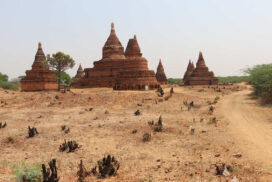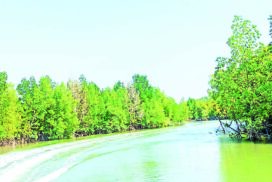Myanmar is spearheading an ambitious initiative to revitalize its environment through the strategic implementation of agroforestry practices. By integrating agricultural and forestry technologies, the nation aims to cultivate more diverse, productive, and sustainable land-use systems that benefit both the economy and the ecosystem.
Under the guidance of the Ministry of Natural Resources and Environmental Conservation, Myanmar is leveraging the support of the Mekong-Lancang special fund to execute a comprehensive agroforestry plan across Nay Pyi Taw Council Area, Yangon, and Bago regions. This initiative, spanning two and a half years, is designed to not only optimize the utilization of forest areas for crop and timber production but also to uplift the livelihoods of local communities.
Central to this endeavour is the active involvement of residents in the stewardship of community-owned forests. Through their participation, these forests are safeguarded and nurtured, ensuring a sustainable supply of forest resources for present and future generations. The Ministry has set an ambitious target of converting 2.27 million acres of land into forested areas over a 30-year master plan, with over 1.16 million acres already being managed using agroforestry techniques.
Agroforestry offers a multifaceted solution, providing socio-economic development opportunities while delivering essential environmental services. By establishing agroforestry zones, Myanmar aims to mitigate the impacts of climate change, including extreme weather events such as heatwaves, floods, droughts, and landslides. Furthermore, these efforts align with the United Nations’ sustainable development goals, addressing poverty alleviation, food security, water quality improvement, and biodiversity conservation.
In parallel, the Ministry is mobilizing communities nationwide to establish firewood plantations and community-owned forests, each spanning two acres per village. This proactive measure not only safeguards the environment but also curbs illegal timber extraction, ensuring the sustainable management of forest reserves and protected areas. Additionally, it provides a readily accessible source of firewood while optimizing land use for seasonal crops, thereby supporting local livelihoods, including those dependent on timber extraction.
Myanmar’s commitment to environmental conservation is evident in its efforts to reverse the decline in forest land. Through initiatives such as reforestation projects, wildlife sanctuaries, national parks, and commercial plantations, the nation is steadily increasing its green cover. The envisioned future promises a landscape adorned with expansive greenery—a testament to the collective dedication of the government and its people towards a sustainable and thriving environment not only in urban areas but also in rural areas.
Initiate greening environment based on agroforestry areas
- March 31, 2024
- 111














